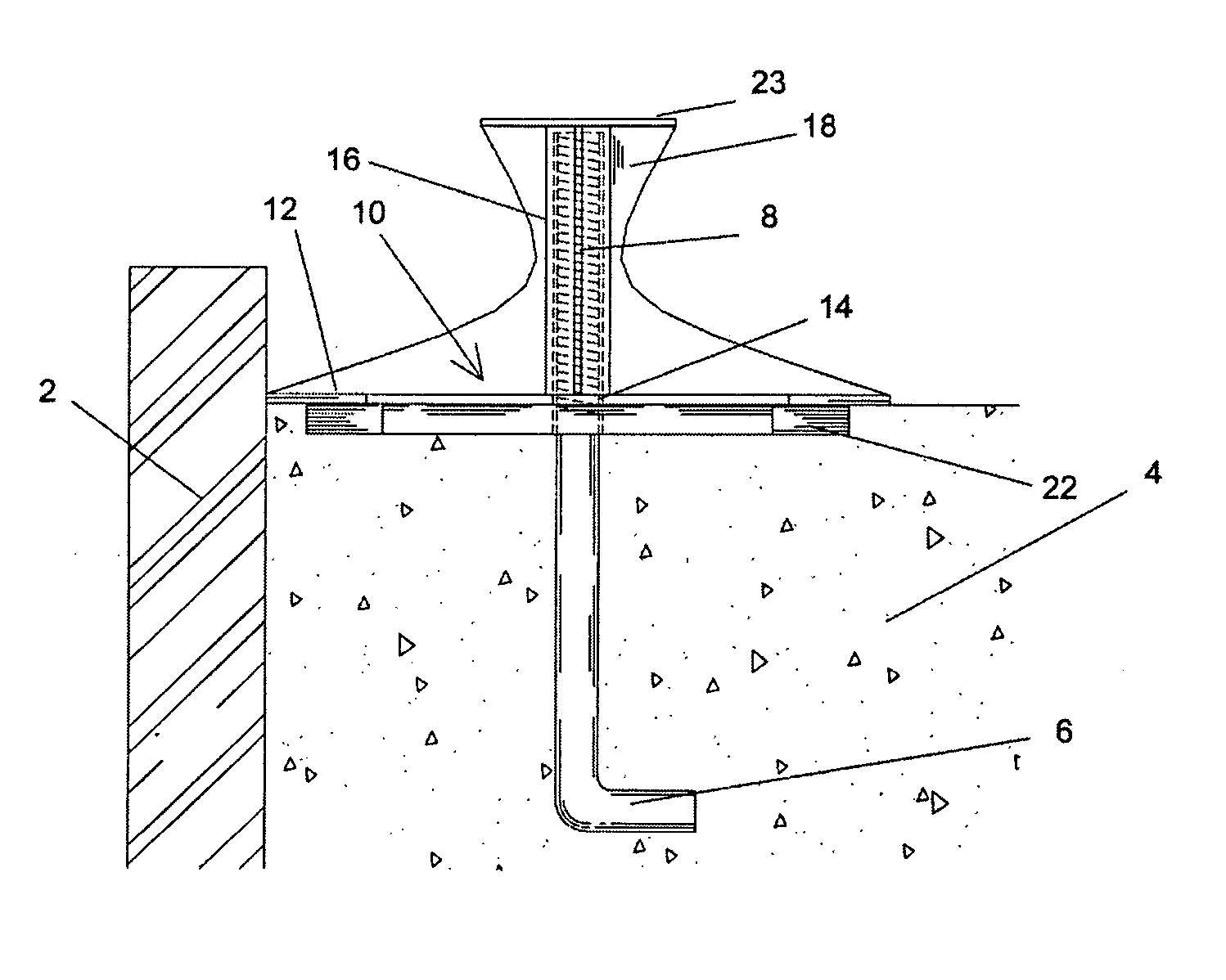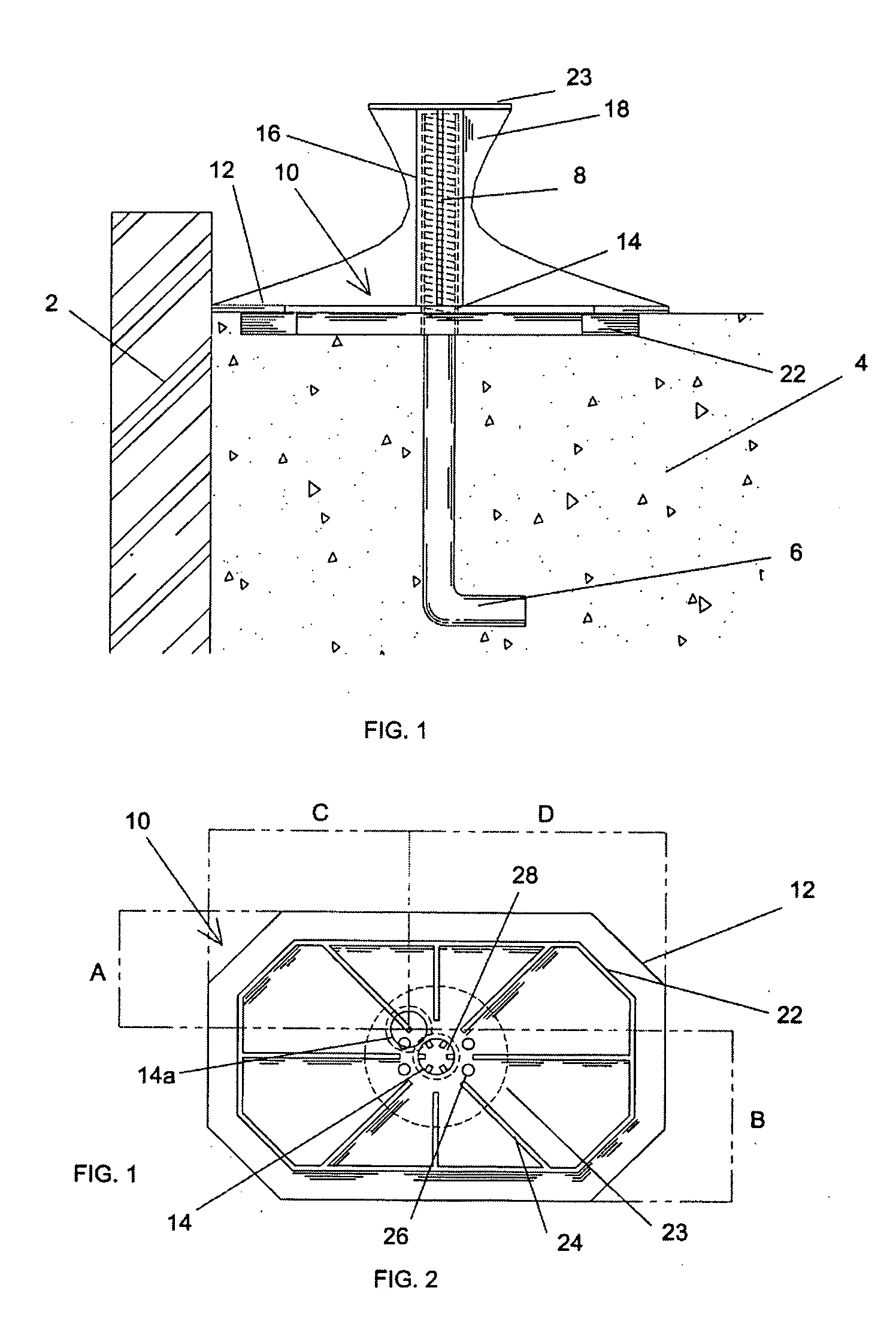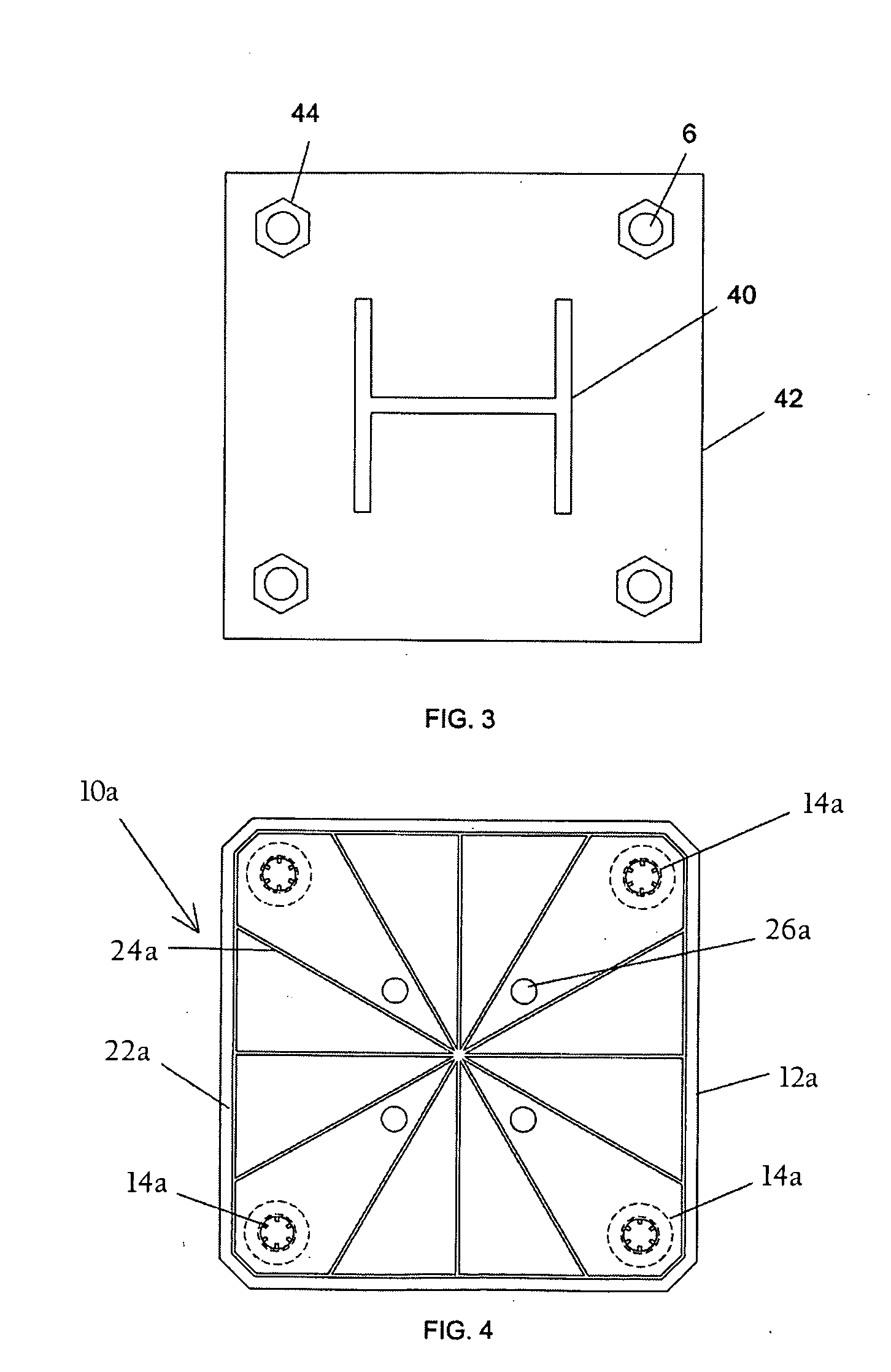Concrete anchor float
a technology of concrete anchors and floats, which is applied in the direction of girders, joists, trusses, etc., can solve the problems of affecting the integrity of the structure, affecting the ability of the anchor bolt to secure the sole plate to the foundation, and the anchor bolts have a tendency to sink or tilt away from vertical
- Summary
- Abstract
- Description
- Claims
- Application Information
AI Technical Summary
Benefits of technology
Problems solved by technology
Method used
Image
Examples
Embodiment Construction
)
[0022] Referring to the drawings, FIGS. 1 and 2 illustrate the concrete anchor float according to an embodiment of the present invention. The concrete anchor float can be configured to be used with any number of conventional anchor bolts, and can be implemented in a variety of size configurations. In one embodiment described below, the concrete anchor float is configured to operate in connection with a single anchor bolt that is 1 / ″ in diameter. In other implementations, the present invention can be configured to operate in connection with rebar, or any other rod-shaped member. FIGS. 3 and 4 disclose a second embodiment of the concrete anchor float adapted for the placement of multiple anchor bolts in a pattern for installation of a column or post.
[0023] Now referring to FIGS. 1 and 5, a side and perspective view, respectively, of the concrete anchor float 10 is shown as it might be used in the construction of a typical concrete foundation. As FIGS. 1 and 6 illustrate, in most cas...
PUM
 Login to View More
Login to View More Abstract
Description
Claims
Application Information
 Login to View More
Login to View More - R&D
- Intellectual Property
- Life Sciences
- Materials
- Tech Scout
- Unparalleled Data Quality
- Higher Quality Content
- 60% Fewer Hallucinations
Browse by: Latest US Patents, China's latest patents, Technical Efficacy Thesaurus, Application Domain, Technology Topic, Popular Technical Reports.
© 2025 PatSnap. All rights reserved.Legal|Privacy policy|Modern Slavery Act Transparency Statement|Sitemap|About US| Contact US: help@patsnap.com



